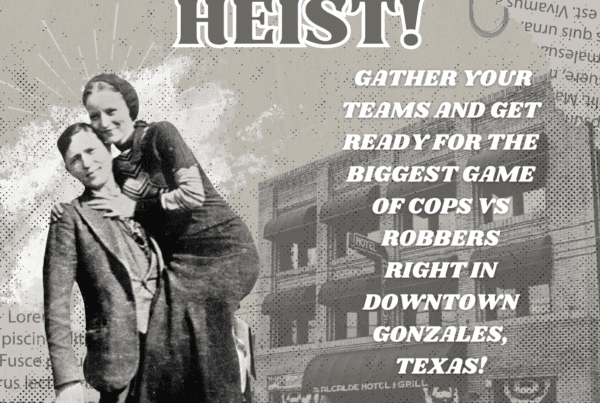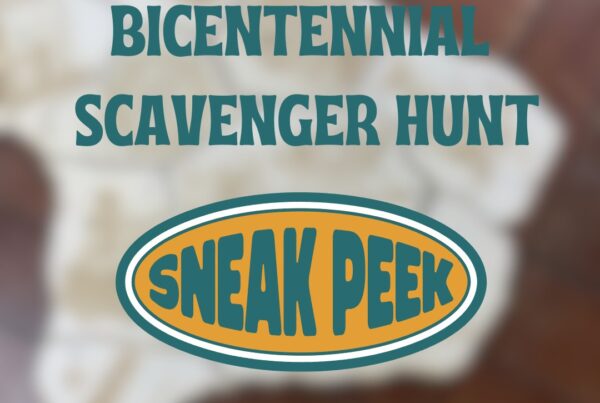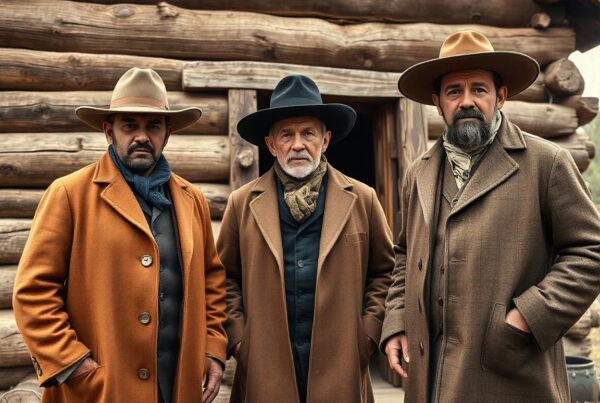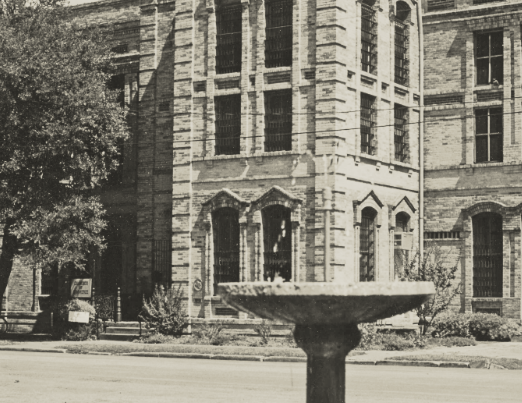On February 14, G.N. Dilworth contracted to build a large two-story building of stone (taken from the R.A. Houston pasture) on the south side of Block 19 at 319 St. Lawrence Street, between W.D.W. Peck’s Store and Paul Levyson’s Store. On March 28, covered sugar baskets, market baskets, and Mormon lunch baskets are for sale at DeWitt’s. On April 11th, contract for new three-story brick jail was granted to Eugene Heiner, architect. Lots of controversy over location. Some wanted it on originally designated Jail Square “in the heart of the City” rather than on originally named Market Square on the river where the existing jail then stood. It was finally determined that Central Square was best but later concern was that it was such a large structure that the “[1857] Courthouse would look like a shed or an outhouse to the jail”. On April 18th, young people of Gonzales form a Cemetery Association to take charge of the Public Graveyard (north College Street). In May, the Guadalupe River flooded. On June 6th, the City Council leased the block just north of the courthouse to Mr. Berringer for six months for his market house. The County had selected this block for the new jail but the City wanted to assert its claim to the property. On June 20th, the Commissioners Court has finally decided to have the new jail built just north of the courthouse on Central Square. The cost was $38,837 with $1,000 allocated for the sewage system. There were twenty-one bids. The building would be of brick with brick trimming, and exclusive of iron work, will be constructed by Henry Kane of Lampasas, at a cost of $20,175. The iron and steel work will be done by Snead & Company of Louisville, Kentucky, at a cost of $15,850.
In July, the S.A. & A.P. railroad came to Gonzales. On August 8th, Kleine Hall is remodeled, doubled in capacity, with an addition to the north. On August 15th, Dr. J.C. Jones House is begun, 108 Hamilton Street (Block 43). In the October 17th issue of The Inquirer, the citizens are calling it “the dengue house” because the large, expensive house and the frequency of the disease called “dengue fever” helped Dr. Jones pay for the house. On August 22nd, Mr. J.P. Randle announces that he will open a dry goods store in the Dilworth Bank Building (on St. Lawrence Street). The G.W. Littlefield House was built on St. Peter Street. To be occupied by Mrs. Harral (his mother-in-law) Moved to 510 St. Michael St. (Block 29) in 1911.
On September 26th, concrete poured for new jail.
On October 3rd, residents were urged to air their bed clothes over a chair and lift the mattress partly over the foot board. If a feather bed is used, pull it over a chair. Then open windows and doors so that fresh air may freely circulate over the bedding for two or three hours. This will make for healthy sleeping. Each member of the family should be trained to do this daily. (Bathing was not a daily ritual in 1885).
On October 14th, the circus was well attended.
In November, amongst the mud of unpaved streets, the Kleine Opera House at the corner of St. James and St. Lawrence Streets had a grand opening. Actors were brought in along with a brass band and an operatic orchestra. Animals roamed loose in town. Dress was formal.
On December 5th, the bricks made by Mr. Bergh for the construction of the jail were rejected by Mr. Henry Kane, contractor, who says they are of inferior quality. Mr. Kane began to manufacture the bricks himself, and sold the inferior bricks, stacked on Courthouse Square. The W.J. Bright House was built, 117 S. College Street. Construction on the T.N. Matthews/J.B. Wells House begun, 829 Mitchell Street. The Gonzales Inquirer belonged, in part, to Reese family










